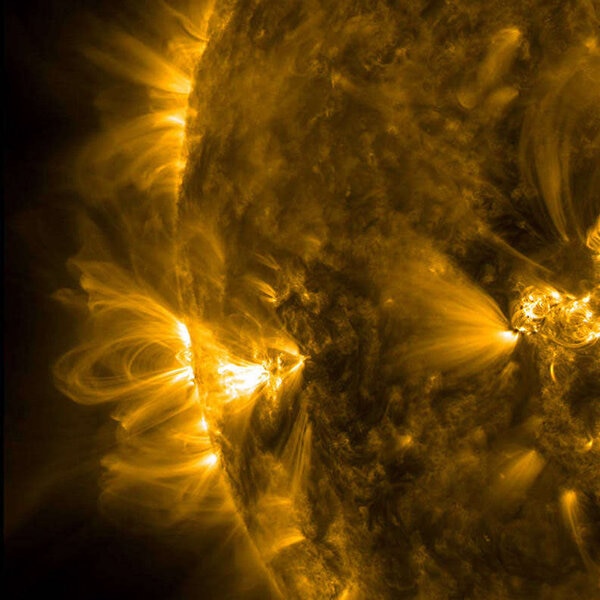Create a free profile to get unlimited access to exclusive videos, sweepstakes, and more!
It rains on the Sun, and as if that isn’t bizarre enough, there’s a new type of solar rain

It rains everywhere in space. Precipitation on Earth may be water, but liquid methane and nitrogen fall on Mars, while other bodies have rainfalls of everything from lava to molten metal, but rain is not limited just to moons and planets.
There is rain on the Sun. It sounds like an oxymoron, but that rain is hot plasma. That this plasma is cooler than our star’s corona is not saying much; anything considered cool on the Sun is still scorching. Plasma rain comes from coronal loops that are either formed by active regions in the magnetic field or in the aftermath of the solar temper tantrums otherwise known as flares (which disturb the magnetic field). Now a new type of coronal rain has been discovered—and it is unlike either of these.
Astrophysicist Leping Li and his research team from the National Observatories of the Chinese Academy of Scientists (NAOC) and the Max Planck Institute have discovered coronal rain that appears to break the rules. They recently published a study about this strange space weather in The Astrophysical Journal.
“Coronal condensation and rain are a crucial part of the mass cycle between the corona and chromosphere,” Li said. “In some cases, condensation and subsequent rain originate in the magnetic dips formed during magnetic reconnection. This provides a new and alternative formation mechanism for coronal rain.”
Nobody really knows why the sun’s corona, or the part of its atmosphere that is the furthest out, is hotter than its surface. This makes rain on the sun sound like the stuff of science fiction. Coronal rain is possible in magnetic loops because plasma is pulled through the lower and middle layers of the solar atmosphere, the photosphere and chromosphere, by the mangetic field until it is above the corona. Away from that intense heat, it can cool and “condense” before it falls back down as rain and gets reheated.
Plasma that rains down after the magnetic field disruption caused by a solar flare, a post-flare loop, is (predictably) known as flare-driven rain. Solar flares occur when so much magnetic energy builds up in the Sun’s atmosphere that it has nowhere to go but to explode into space. They can generate as much energy as millions of 100-megaton hydrogen bombs simultaneously exploding, so you can imagine that is enough power to shake up the magnetic field in ways that allow it to pull plasma upward, often above the corona, where that plasma cools and eventually falls as rain when the sun’s rage dies down.
Solar rain results from a consistently active region in the magnetic field when the magnetic force in that area is constantly pulling plasma above the corona where it cools and then falls back down, is quiescent coronal rain. What Li and his team discovered is neither. Both of the other types occur in closed magnetic loops, but the magnetic field can sometimes be perturbed enough to break in places. These breaks are open magnetic loops that have now been found to be capable of producing solar rain. The new type of rain is the result of those broken structures that remain open until they reconnect with the rest of the magnetic field.
When open structures are incorporated into the Sun’s magnetic field again, this phenomenon is called magnetic reconnection. The rest of the magnetic field will then pull an open structure downward and create a dip. Any plasma surrounding that structure is also magnetically pulled into the dip, condensing and cooling as heated atoms that were flying around wildly calm down and come closer together, creating denser plasma. Thermal instability results from this denser plasma, which eventually rains to the surface.
Though the new type of coronal rain was only observable from the outer atmosphere of the Sun. It was nearly impossible to see anything from observations facing the fiery orb, except darker areas where there was a considerable amount of condensation.
“If only the on-disc observations were available, the relation between the condensations and reconnection, shown clearly by the off-limb observations, could not [have been] identified,” Li said. “Thus, we suggest that some on-disc condensation events seen in transition region and chromospheric lines may be facilitated by reconnection.”
As bright as it is, the sun has revealed another secret it has been hiding, and that could eventually tell us even more about the star we only think we know.



























